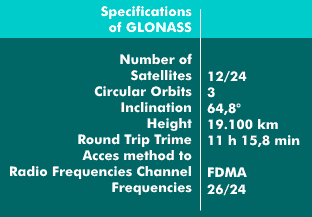global navigation satellite system (Russia) (GLONASS)
GLONASS (Global Navigation Satellite System) is the Russian satellite navigation system, the counterpart to Galileo and the Global Positioning System( GPS). The installation of the first three MEO satellites in space took place as early as 1982. The installation of the other satellites took many years and was not completed until 2011.
The Glonass constellation consists of 24 satellites orbiting the Earth as MEO satellites in three orbital paths at an altitude of 19,100 km, the inclination angle to the equator is 64.8°, and the orbital period is 11 hours and 15.8 minutes. Twenty-one of the 24 satellites are operational, the remaining three serve as spares.
Each satellite transmits on slightly different transmission frequencies in the frequency range between 1,598 MHz and 1,606 MHz and operates with Frequency Division Multiple Access( FDMA). As with the GPS system, the services offered are a general-purpose service with low resolution and C/A code, but also a high-resolution service with Precision Encrypted Code (P/Y code). The resolution itself is slightly lower than that of the GPS system.
Glonass, together with the GPS system, can improve positioning accuracy. For this purpose, there are dual navigation devices that can receive both navigation systems.

